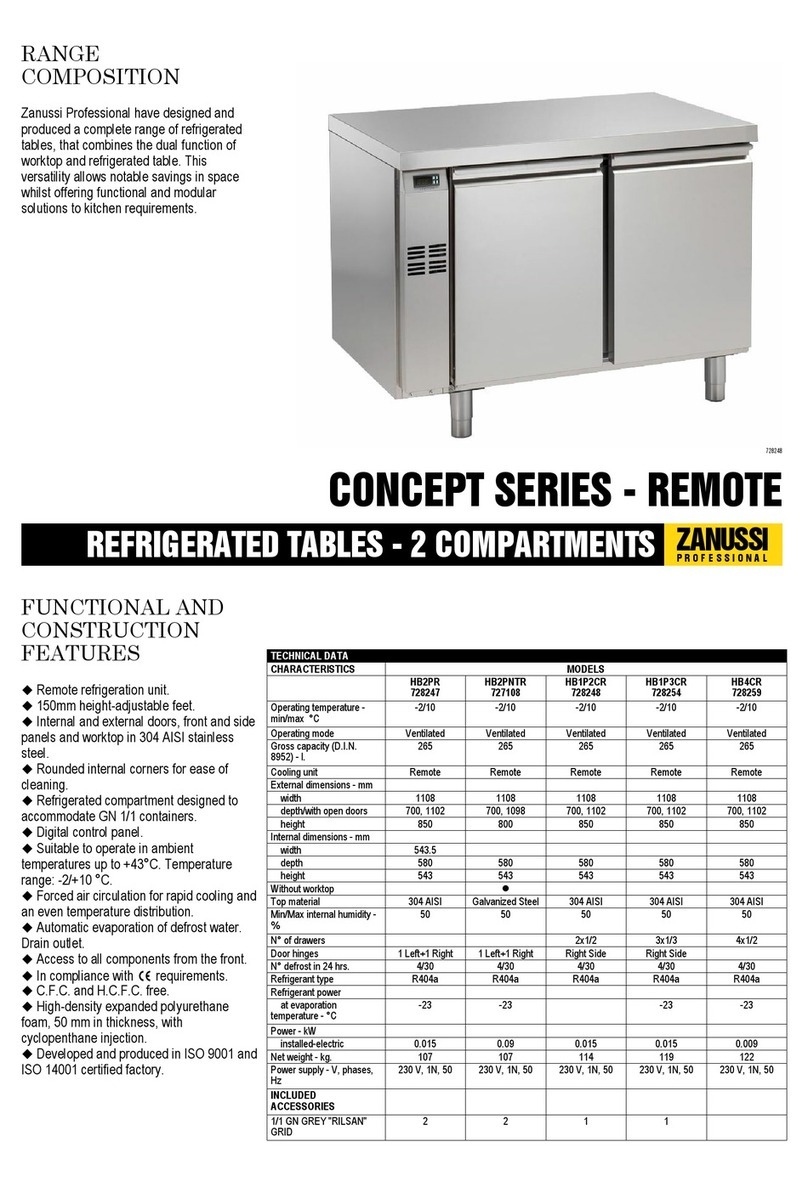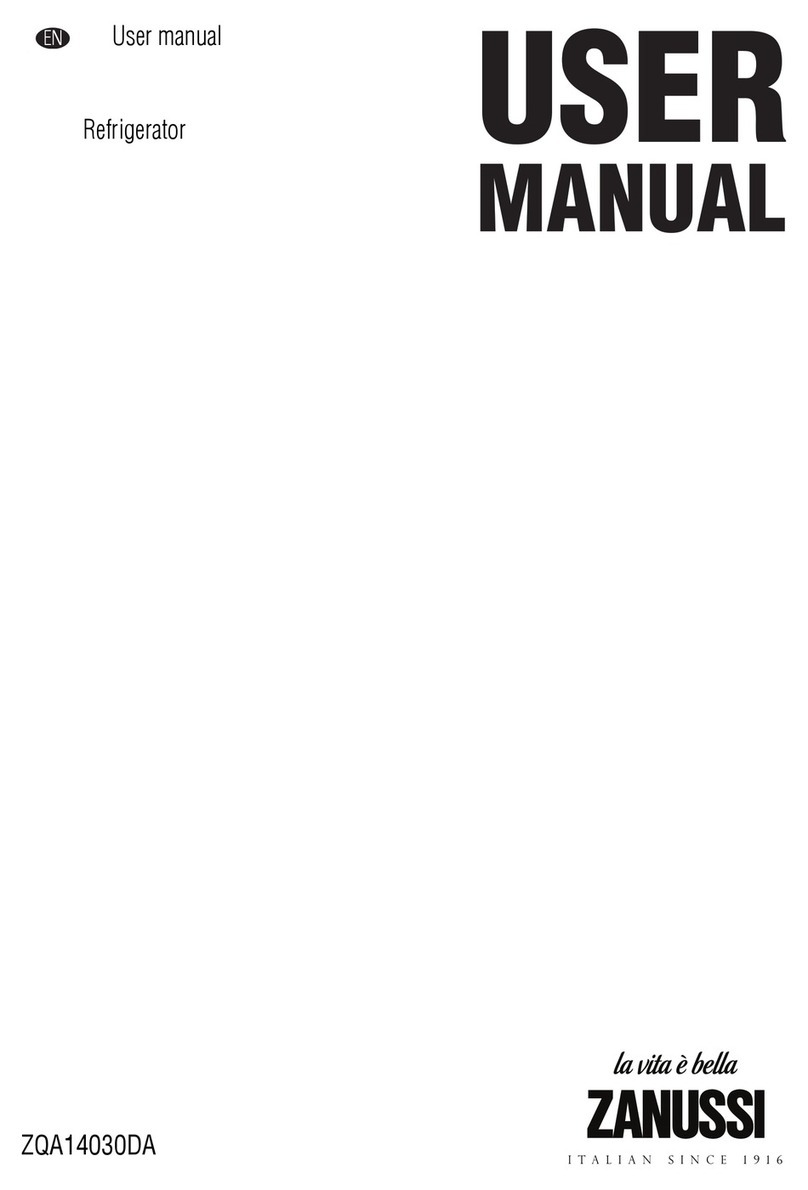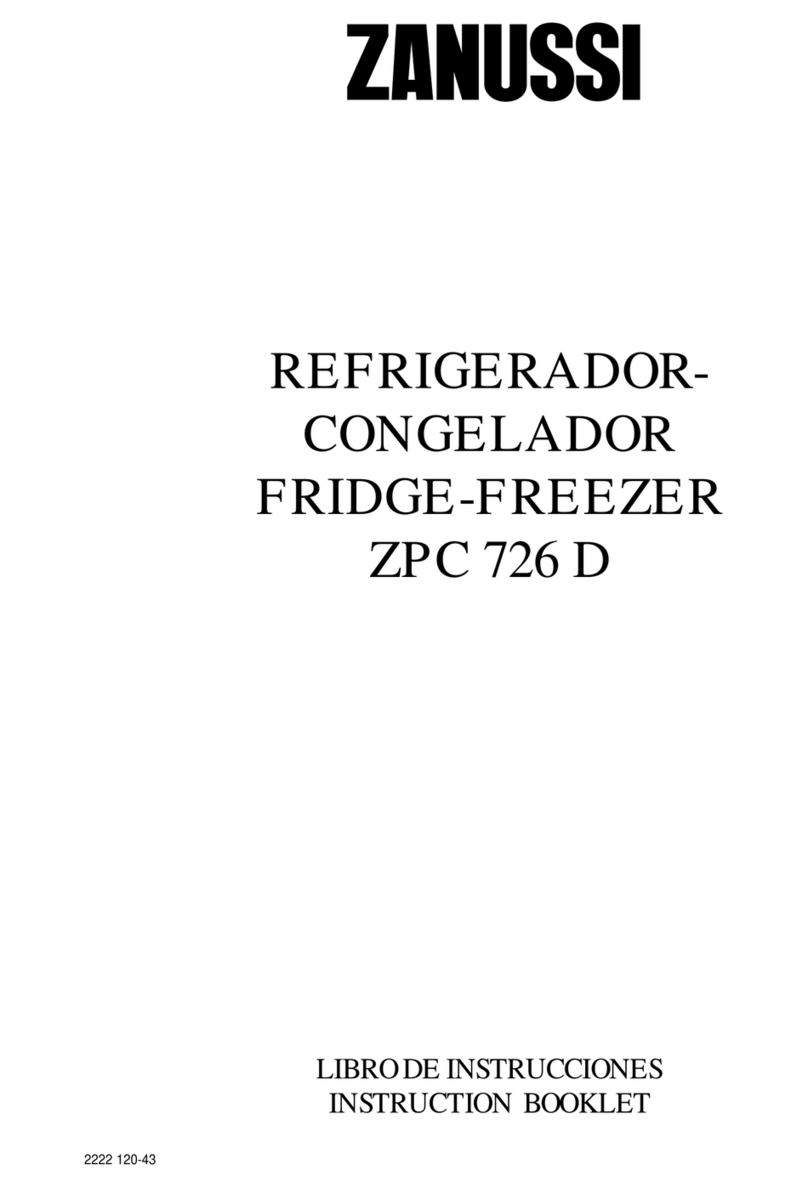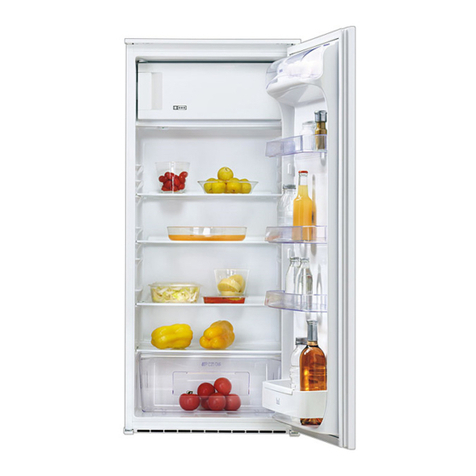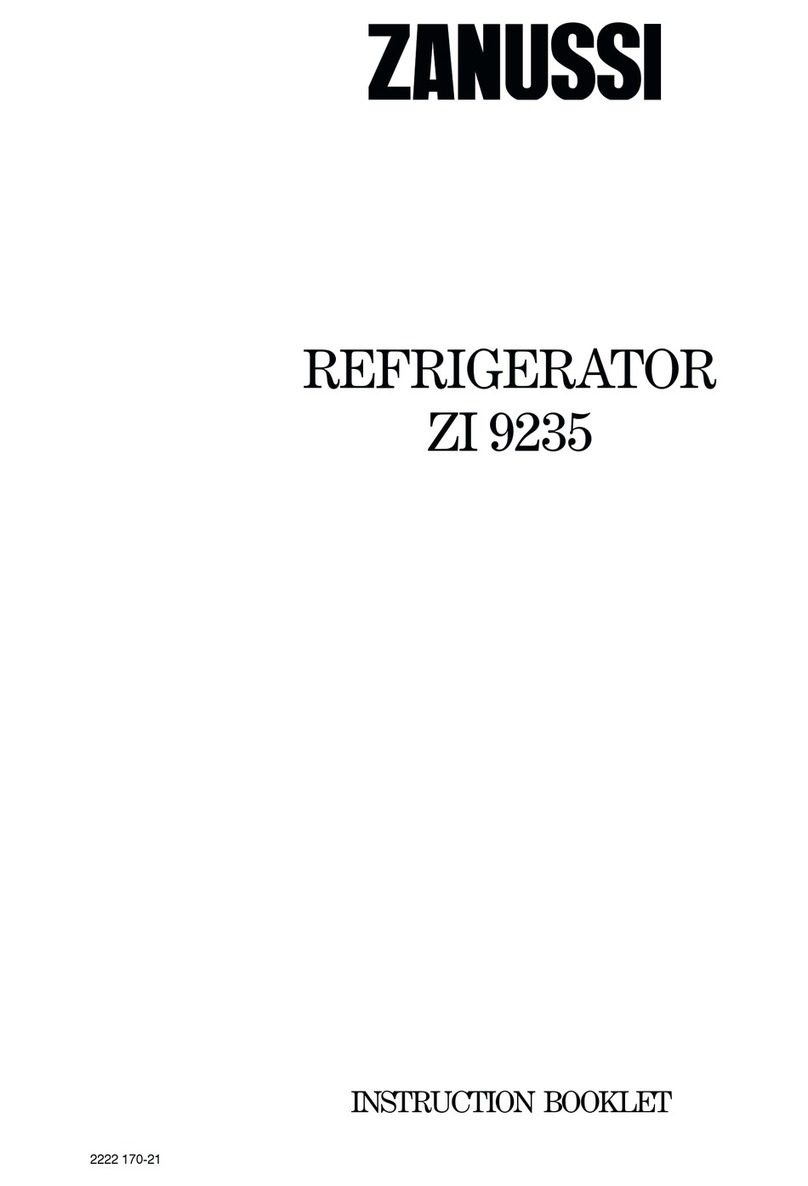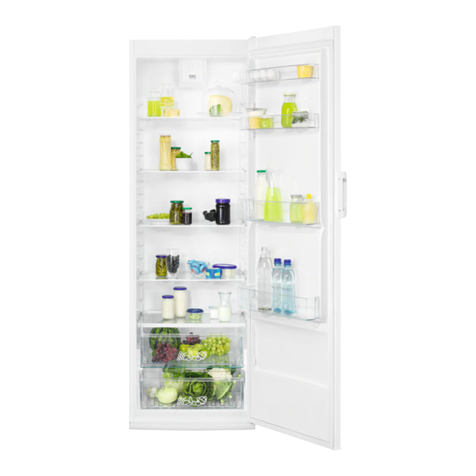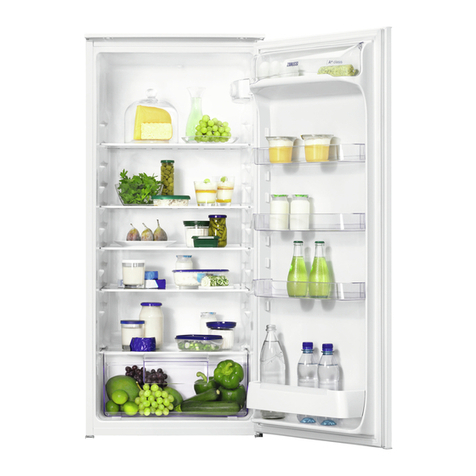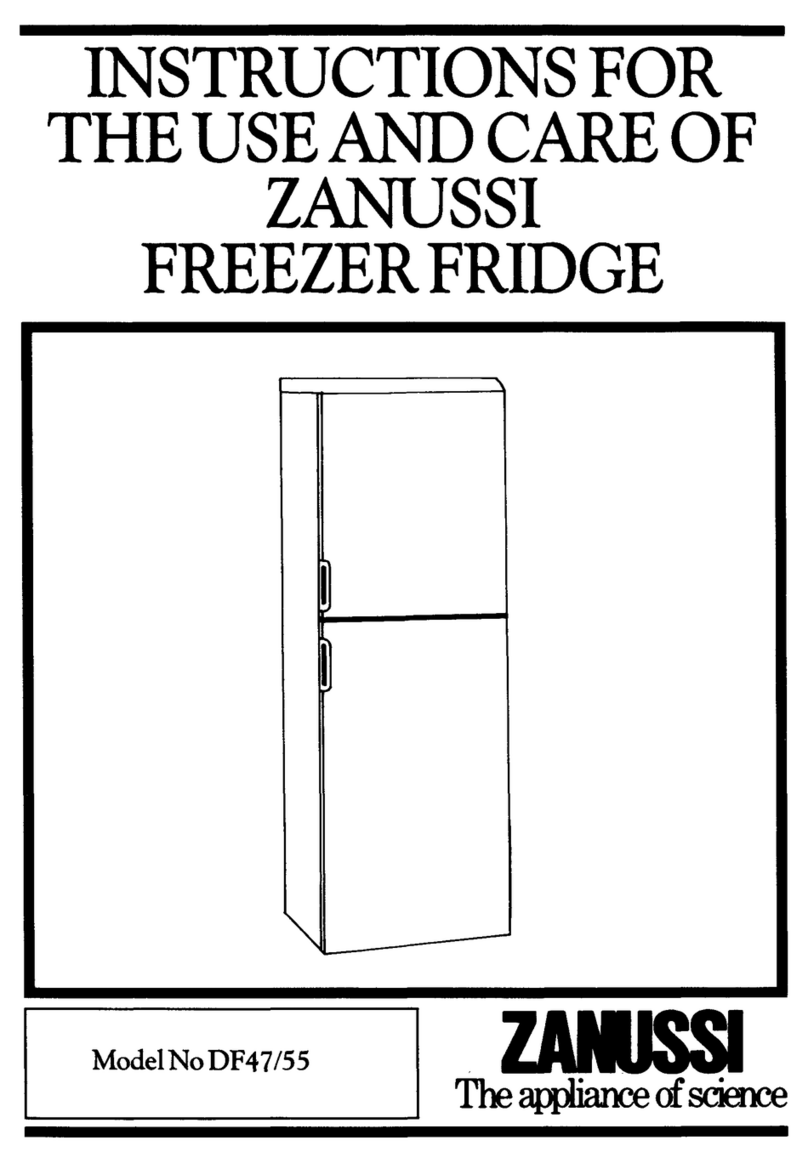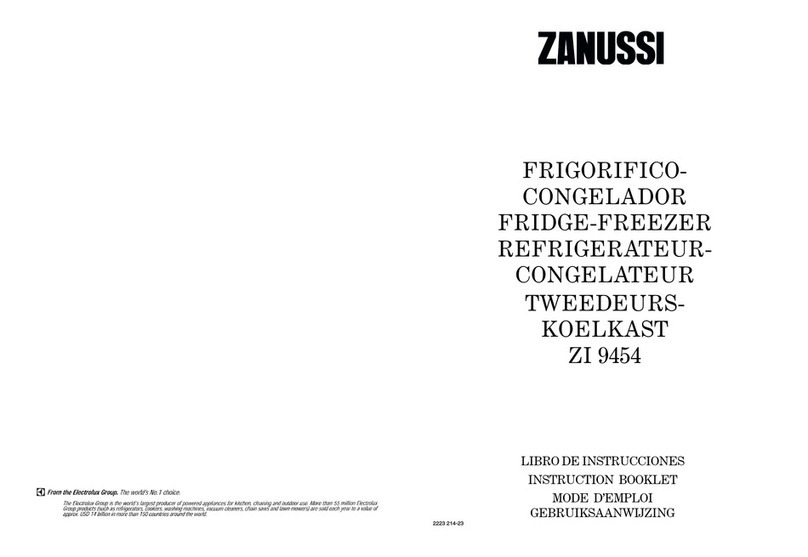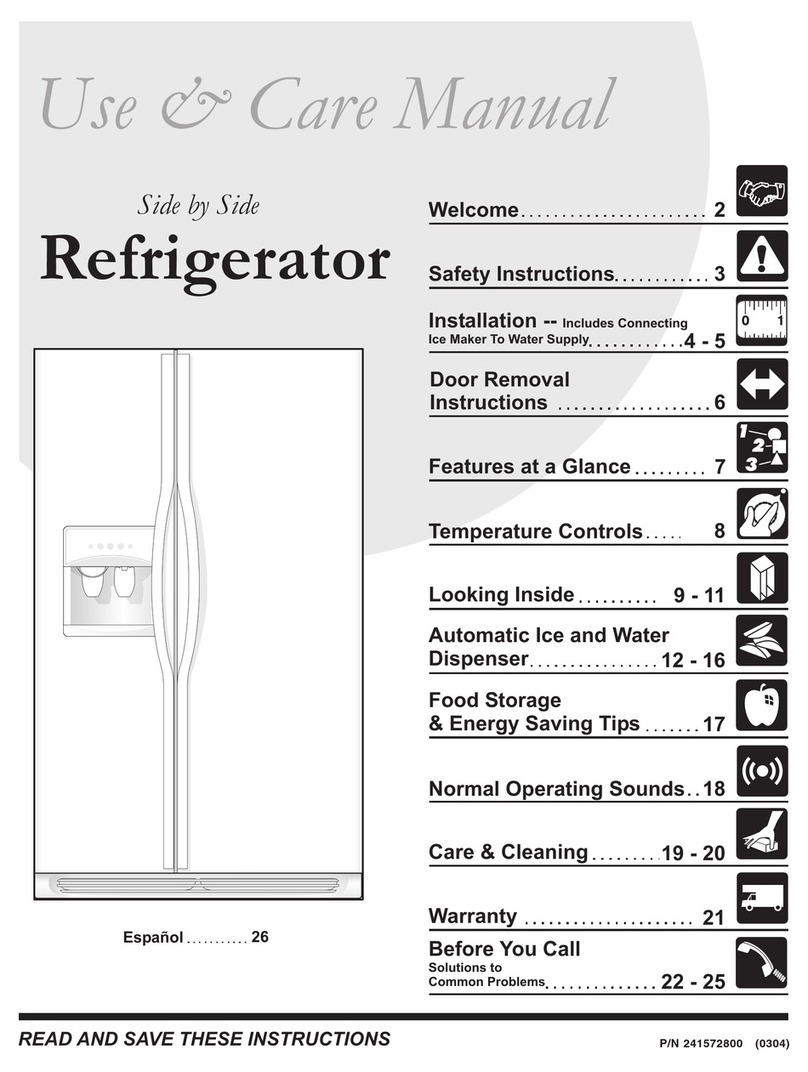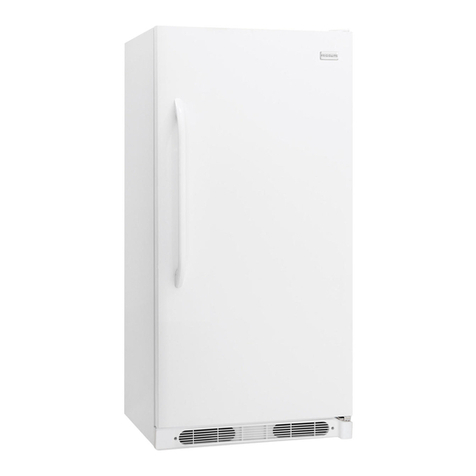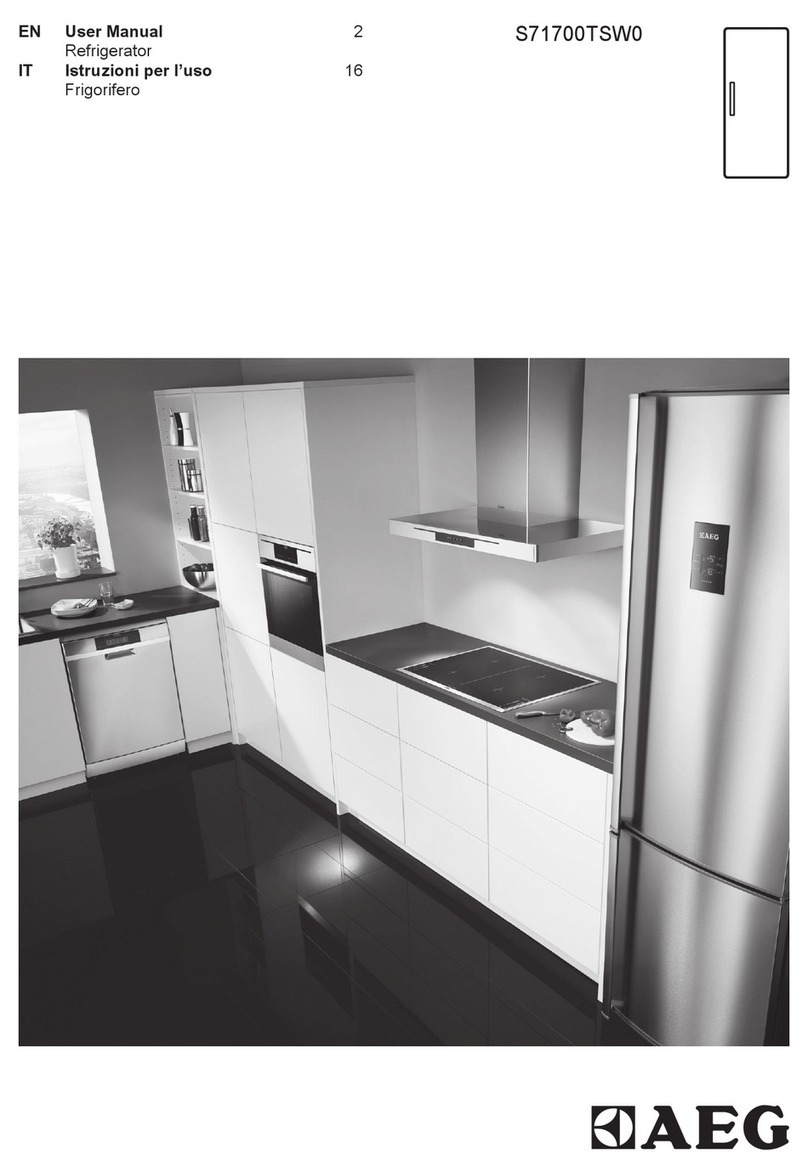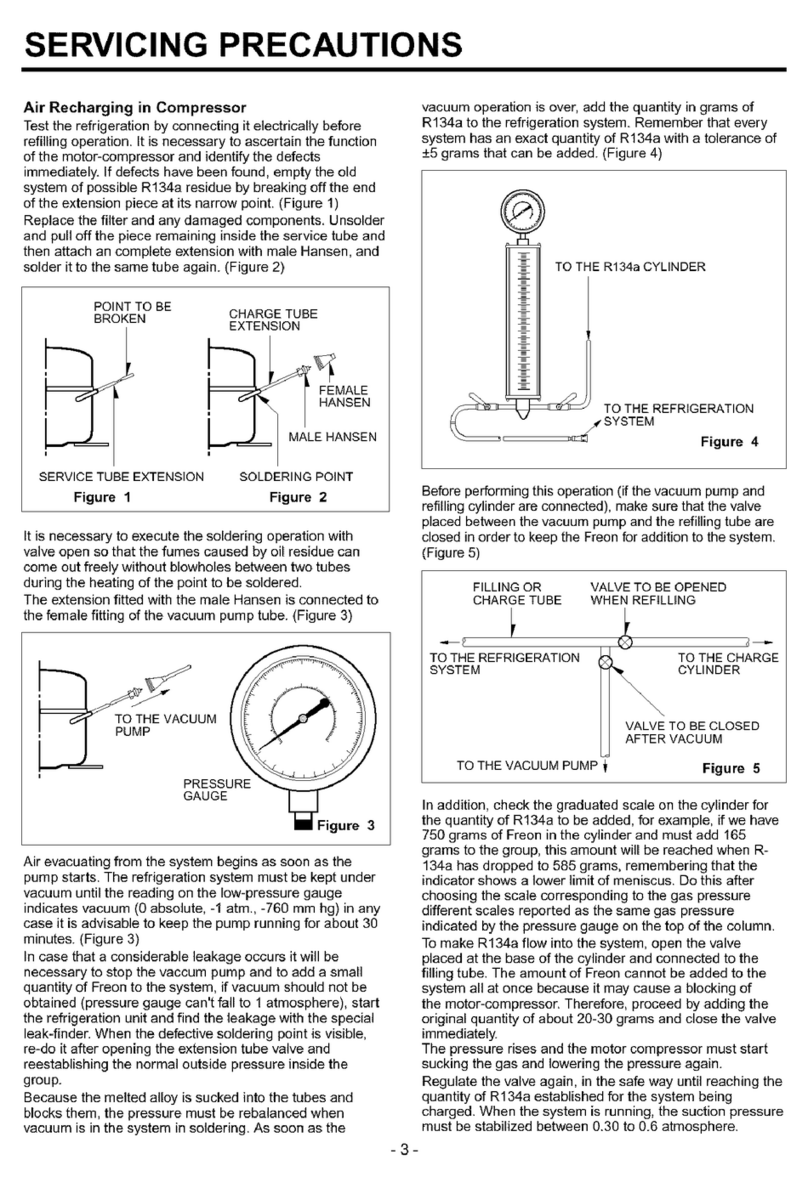60
Storing in the freezer
After finishing freezing it is practical to put the frozen
food from the wire shelf in the frozen food
compartment to the place under that making room for
a next possible freezing. Adjustment of the wire shelf
in the frozen food compartment (2 positions) can be
used only during storing, as freezing can be done only
at the highest position of the wire shelf. Food already
stored is not damaged by another freezing.
(The goods when are put directly on the cooling plate
freeze too fast!)
Do not forget to keep to the storage time given
on the packaging of frozen products if you buy
them frozen. To store home-frozen products see the
storing instructions placed in the door of the freezer.
Symbols signify the various foods, numbers mean
maximum storing time given in months.
It is safe to store quick-frozen, frozen foods only
if they have not dissolved even for a short time
until placing them into the freezer.
If the deep-frozen food has already dissolved,
refreezing is not recommended, it has to be used up
as soon as possible.
How to make ice cubes
To make ice cubes fill the enclosed ice cube tray with
water and put it to the frozen food compartment.
Wetting the bottom of the tray and setting thermostatic
control knob to maximum position can shorten
preparing time. After finishing do not forget to reset
the thermostatic control to the suitable position.
Ready ice cubes can be taken out of the tray under
running water then twist or hit it. If the ice tray freezes
to the compartment, avoid using metal tools or knife to
take it out as the cooling system can be damaged.
Some useful information and
advice
The variable shelves are worth paying attention to,
which increases the usability of the fresh food
compartment considerably. Rearranging the
shelves is also possible when the door is open at an
angle of 90°.
After opening and closing the door of freezer
vacuum will rise inside the appliance because of
the low temperature. So wait 2-3 minutes after
closing the door - if you want to open it again - while
inner pressure equalises.
Take care of operating the freezer at a position of
thermostatic control so that the inside temperature
can never go above -18 °C, since temperature
higher than this can deteriorate frozen foods.
It is practical to make sure of faultless operation of
the appliance daily so as to notice possible failure
in time and prevent deterioration of frozen foods.
How to save energy
The colder the ambient temperature of the
appliance is the less energy it uses.
Avoid putting the appliance in a sunny place and
near anything that gives off heat.
Be sure that the condenser and the compressor
are well ventilated. Do not cover the sections
where ventilation is.
Wrap products in tightly closing dishes or cling
film to avoid building up unnecessary frost.
Do not leave the door open longer than
necessary and avoid unnecessary openings.
Put foods into the appliance only in a closed
dish.
Put warm foods into the appliance only when
they are at room temperature.
Keep the condenser clean.
The appliance and environment
This appliance does not contain gasses which
could damage the ozone layer, in either its
refrigerant circuit or insulation materials. The
appliance shall not be discarded together with the
urban refuse and rubbish. Avoid damaging the
cooling unit, especially at the rear near the heat
exchanger. Information on your local disposal sites
may be obtained from your municipal authorities.
The materials used on this appliance marked with
the sympol are recyclable.
Maintenance
Hints and ideas
In this chapter practical hints and ideas are given
about how to use the appliance to reach maximum
energy saving and there is environmental
information about the appliance as well.
Defrosting
Bleeding part of the moisture of cooling chambers
in form of frost and ice goes with the operation of
the appliance.
Thick frost and ice has an insulating effect, so it
reduces cooling efficiency as the temperature
increases in the cooling chambers and they need
more energy.
GB


